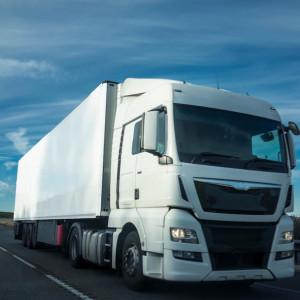How the ULEZ Will Impact Delivery in 2025


The Ultra Low Emission Zone (ULEZ) in London has been a pivotal initiative aimed at reducing air pollution by targeting vehicle emissions. In 2025, its impact on delivery operations will continue to evolve, affecting fleet managers and transport professionals across the city. Explore the ULEZ framework, its upcoming impact on deliveries and the steps fleet managers can take to comply while maintaining efficient operations.
What Is the ULEZ?
The ULEZ was introduced in April 2019 to combat air pollution by discouraging the use of high-emission vehicles within designated areas of London.
All day, every day except Christmas, the ULEZ enforces strict emission standards, with non-compliant vehicles subject to daily charges.
Key ULEZ Guidelines for Fleet Professionals
Vehicles must meet the following Euro standards:
- Euro 3 for motorcycles and mopeds
- Euro 4 for petrol vans and cars
- Euro 6 for diesel vans and cars
Vehicles that fail to meet these standards face:
- ?12.50 per day for cars, vans and motorcycles
- ?100 per day for heavier vehicles like lorries, buses and coaches
How Truck Weight Impacts ULEZ and LEZ Charges
Understanding vehicle weight ratings is essential for fleet managers navigating ULEZ and LEZ regulations. A truck's weight classification determines which emission standards it must meet and whether additional fees are required. Two key measurements are vital in compliance -- gross vehicle weight rating (GVWR), which is the maximum allowable weight of a vehicle with cargo and passengers, and gross combination weight rating, which refers to the total permissible weight of a vehicle and its fully loaded trailer.
Trucks under 3.5 tonnes must comply with ULEZ or pay a ?12.50 daily charge. Those over 3.5 tonnes GVWR fall under LEZ regulations, requiring them to meet Euro 6 standards or pay a ?100 daily charge.
How Will ULEZ Impact Deliveries in 2025?
The August 2023 ULEZ expansion -- which extended the zone to all London boroughs -- has already reshaped delivery logistics. A report indicates a 27% reduction in nitrogen dioxide pollution since the expansion.
This trend will continue in 2025, with further enforcement efforts potentially increasing compliance costs.
ULEZ Compliance: Challenges for Fleet Operators
Fleet managers should anticipate these main challenges as they navigate ULEZ regulations:
- Increased daily spending: Fleets with non-compliant vehicles face mounting daily charges.
- Vehicle upgrades: Businesses may need to replace older vehicles with ULEZ-compliant models.
- Route optimization: To reduce costs, companies must rethink delivery routes to minimize time spent within the ULEZ.
How Fleet Managers Can Adapt to ULEZ Guidelines
Adapting to ULEZ while maintaining operational efficiency requires strategic planning. Here are practical steps for fleet professionals:
- Prioritize replacing frequently used vehicles with ULEZ-compliant models.
- Consider phased upgrades to spread costs over time.
- Examine the options -- EVs are exempt from ULEZ charges and offer long-term savings, while hybrid vans and trucks that meet Euro 6 standards provide a cost-effective alternative.
- Plan shorter, direct routes through non-ULEZ areas.
- Schedule off-peak deliveries to reduce congestion and improve fuel efficiency.
- Avoid excessive idling -- this drains energy without contributing output, leading to unnecessary wear and inefficiency.
- Maintain steady speeds to reduce fuel consumption. Rapid acceleration and deceleration can increase fuel use by 20%, raising overall costs.
Preparing for ULEZ Compliance in 2025
The ULEZ and LEZ regulations will continue to shape London's transport industry in 2025.
While compliance may require financial investment, fleet managers who take proactive steps -- such as upgrading vehicles, adopting alternative fuel options and optimizing routes -- can reduce costs and ensure uninterrupted operations.
Staying informed and making strategic adjustments can help fleet professionals align with London's clean air goals while maintaining delivery efficiency.